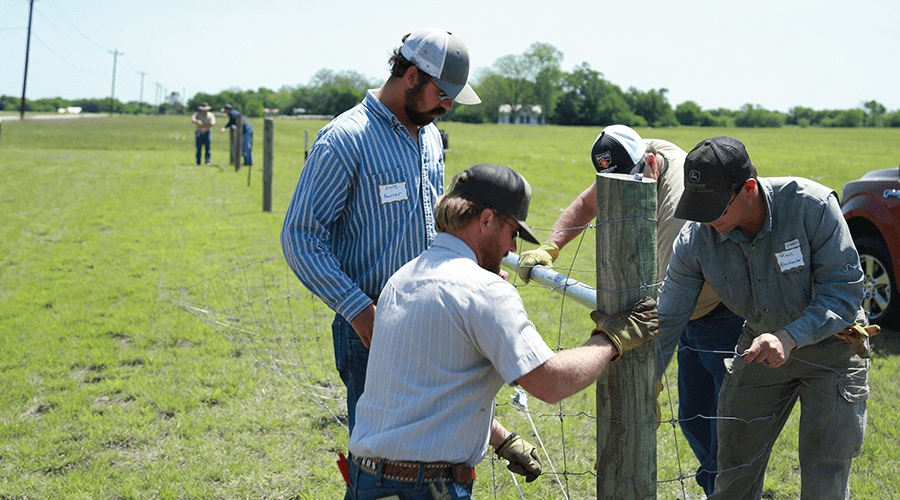
Fence Post Spacing
A step-by-step guide
Do you have a fence installation project at hand? If you’re already thinking about your gate posts, end post, deciding whether to use wooden posts or steel… you might feel overwhelmed already!
When planning to build a fence, it is important to take into account the correct spacing and depth of fence posts.
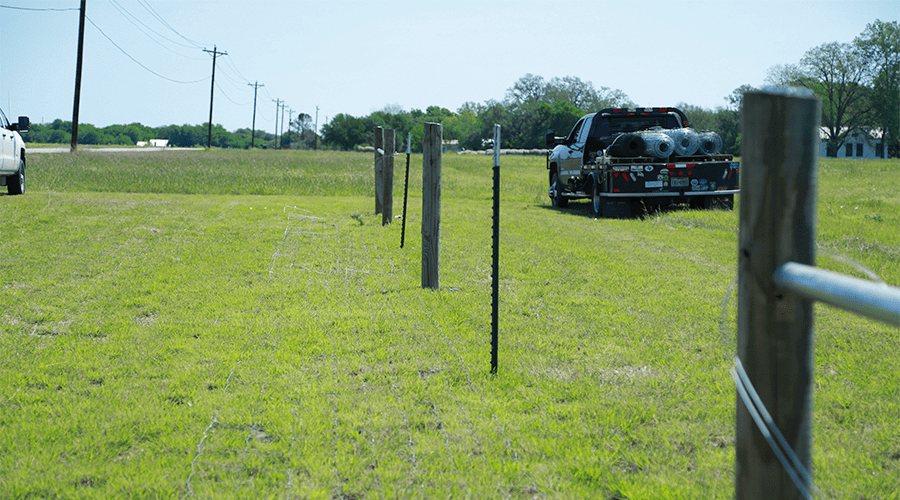
So, how far apart should fence posts be? The standard spacing for fence posts is 8 to 25 feet apart, depending on the type of fence. A standard wood fence would require posts 8 feet apart, while a high-tensile wire could span 25 feet.
Keep in mind, terrain, climate conditions, snow and ice loads, and soil conditions are also factors that need to be considered.
How to identify what fence you need
Identify a fence according to your project before thinking about post spacing.
What type of project do you have at hand? You could be laying out a fence for crop protection, perimeter control, livestock or wildlife containment or exclusion.
Taking into consideration the nature of your needs will help you first determine the type of fence required to complete a successful project.
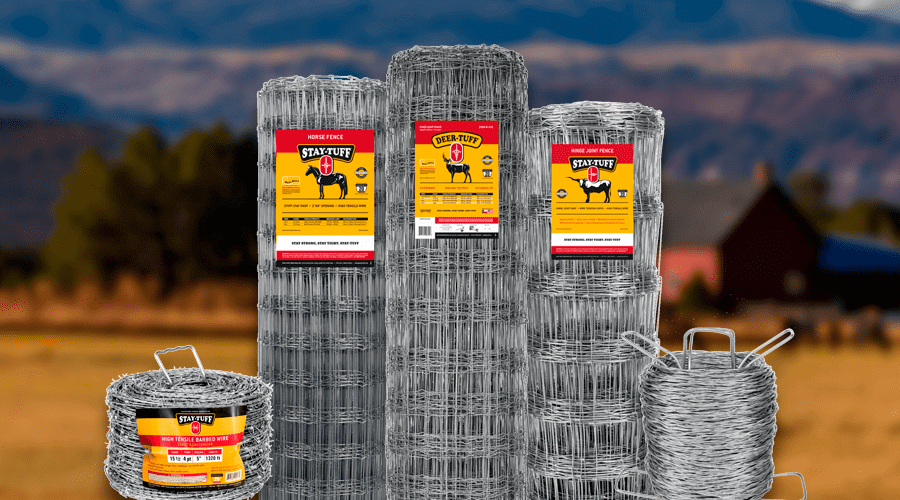
STAY-TUFF has options that offer durability, integrity and performance you won’t find anywhere else.
Our fencing solutions come in different heights, and are suitable for home projects, as well as commercial or industrial applications.
How to lay out a fence for your needs
Before starting any project…
- Check property lines!
It is important that you verify and have the utmost certainty before setting brace and line posts. This will save you time and trouble! - Call Before You Dig
Always call before you start any fence construction to make sure the area is clear of hidden obstacles and dangers like buried power lines, water lines, gas lines, etc.
Different parts of the country have different numbers and places to call.
STARTING A PROJECT
You should always sketch a map of your property that includes property lines, underground utilities, natural obstacles and other important features before installing the fence or any fence posts, for that matter.
After you have finished your sketch, map all the fence support elements, which include:
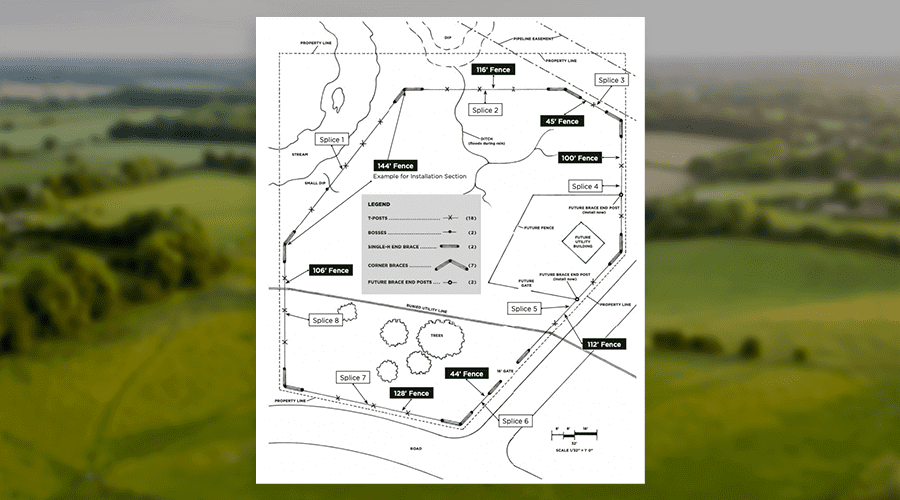
- Brace posts – Designed to anchor a fence and support its weight
- Line posts – Provide support along the length of the fence
- T-Posts – Hold the fence in a vertical position
- Boss posts – Also hold the fence vertical, and provide extra support along the fence where there are severe dips, hips and ledges in the fence line
How to select posts
Let’s dig a bit deeper into the subject of posts.
Here’s what you need to know about the difference between them:
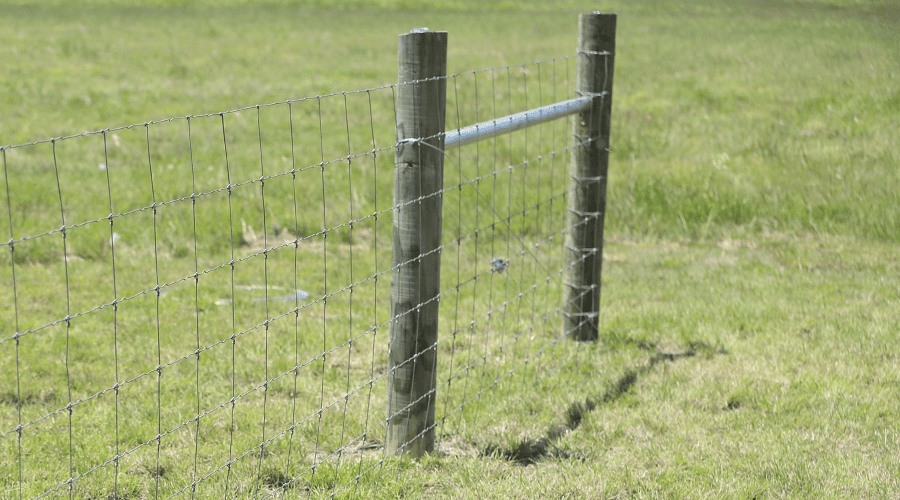
Brace posts
Brace posts give stability to your structure.
A brace is required every time your fence stops, starts or changes directions, regardless of the length of its run.
These posts are what keeps the fence tensioned and help it support its weight.
They are composed of the following:
- End posts – The anchors of the fence. Wire is attached at the beginning and end of each straight run
- Brace posts – Hold end post in place, along with cross members.
- Cross members – They connect end & brace posts, allowing them to distribute the force of the fence.
- Brace wires – They transfer the force between the posts of the brace
T-POSTS & bosses
For a STAY-TUFF Fence, post spacing for T-Posts and Boss Post varies between 8′ to 25′, taking into consideration terrain, soil (light soil will require less distance between posts), turns in the fence line, and animal pressure (place them closer in high animal pressure applications).
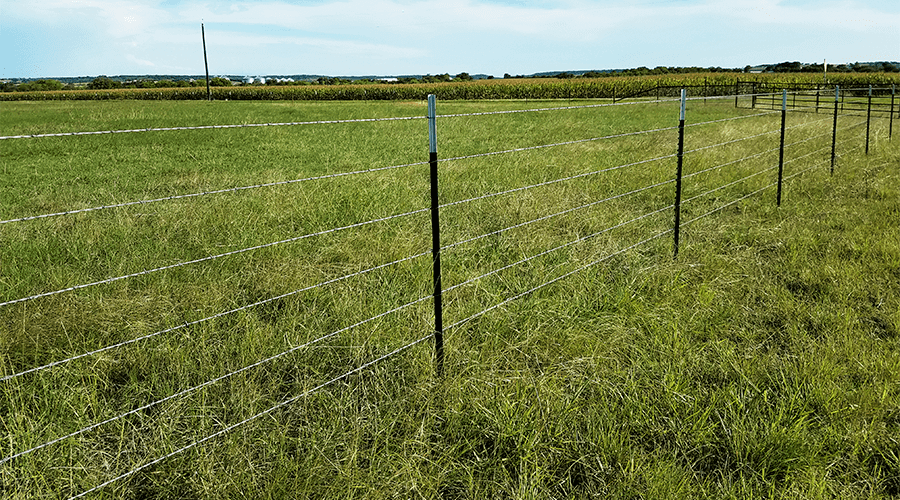
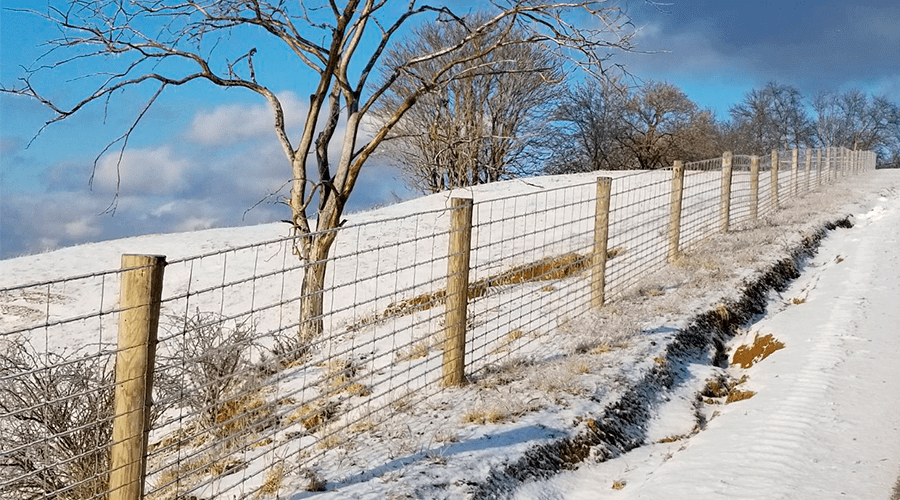
STAY-TUFF offers a wide range of products, offering you the option to use less posts, which in turn will save money and labor, while investing in a good-quality fence wire that will last for generations.
Post spacing
The setting of your posts needs to be done correctly because it affects the performance, durability, and longevity of the fence.
If fence posts are too close together, the fence could be too ridged and not allow the wire to have the flex and give to absorb an impact.
On the other hand, spacing posts too far apart is detrimental to the life expectancy of fence structures, due to the loads placed on the fence during climate changes, weather events and from animal pressure.
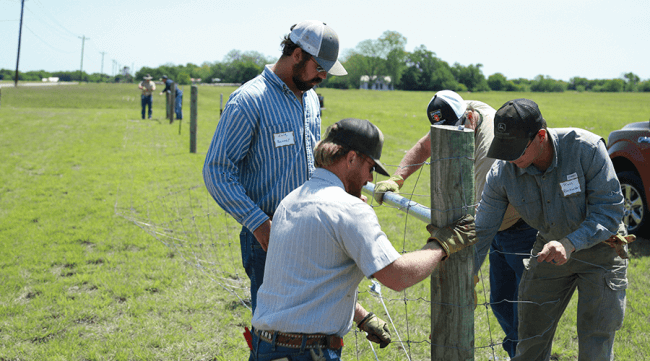
Fastening wires
STAY-TUFF also has the tools to install, fasten and splice fence wire – all steps which are needed to complete an installation project.
We carry the tools you need for every step of posts & wire installation.
We’re glad to connect you with an authorized distributor! Visit https://staytuff.com/store-locator/ to learn more.
I purchased the sheep and goat wire. Let me be honest this is the best wire I’ve invested my money into. I spaced old electric poles 25’ apart and I’ve been fencing 1 acre at a time and I still have 29 acres left lol. The wire is worth the money because it saves money in the long haul and once your 1st 300’ is up and you see the difference between old wire compared to this wire, you’ll understand why it’s #1 in my book. Thanks Staytuff
If I use 4″*4″concrete posts for pvc coated barbed wire fence, what is the spacing of two concrete posts that you recommend ?
Traditional post spacing for barbed wire is 10 to 12 feet, we are not familiar with pvc coated barbed wire so you suggest you contact your supplier to verify this
How many posts will I need for barbed wired fence of or two acres!
The number of posts required for a one- or two-acre barbed wire fence varies based on factors such as the type of land. If you opt for T-posts, you can space them at intervals of 10-12 feet apart. However, if you use wooden posts, you may space them between 10-25 feet apart. Additionally, the post spacing depends on the amount of pressure or stress the fence will experience. If there are numerous animals on the land, it’s advisable to place the posts closer together. Conversely, if there are fewer animals, you can space the posts further apart
Can you space one section of shadow box fence 12 feet with 4×4 posts? All other posts are 6 feet on center.
going to build a goat fence using ST-832B. All post will be 2 7/8″ oil pipe. What distance would you recommend between post?
What would the measurement from center to center on 8 foot spacing wooden fence